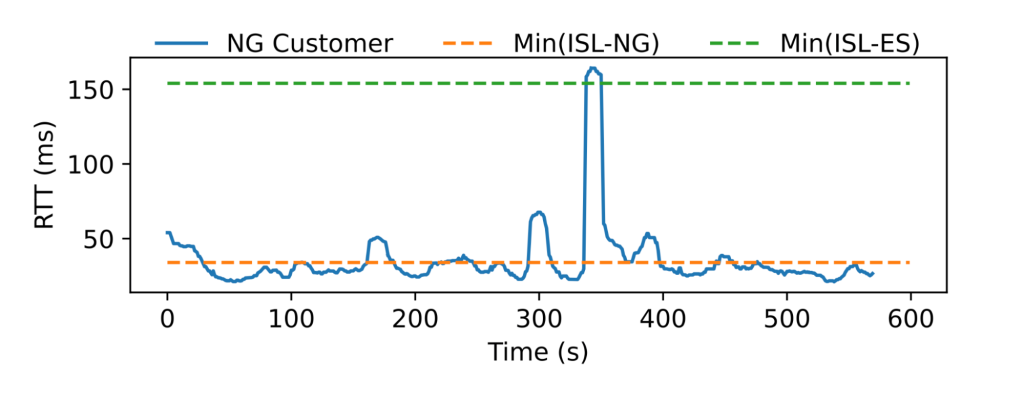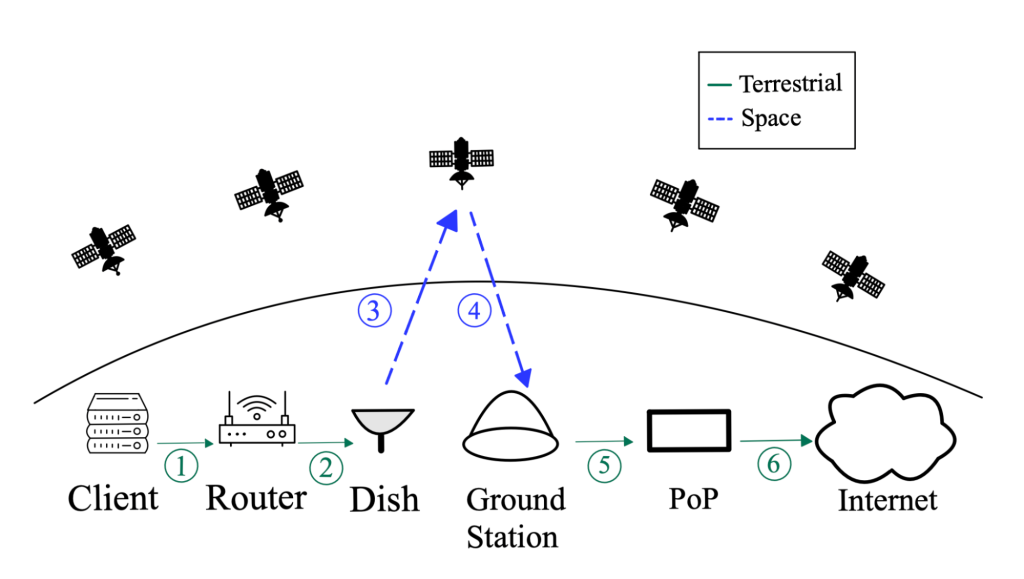Low Earth Orbit (LEO) satellite networks are quickly gaining traction. They promise everyday Internet users impressively low latency, high bandwidth, and global reach. But how valid are those promises?
Read: Are LEOs the Future of the Internet, and What Exactly Are the Benefits and Drawbacks?
Recently, my colleagues and I conducted the most geographically diverse data-driven analysis of LEO satellite latency, showing that customer latency varies dramatically depending on where you are in the world. Based on measurements from 2,400 users across 27 countries, satellite Internet customers in Nigeria experience the highest average latency (round trip time or RTT), followed by Brazil. In the US, Georgia customers experience the highest average latency (58 ms).

In one instance (Figure 2), a Nigerian customer’s RTT increased between 2 and 5 times the median, indicating that the satellite service, in this instance Starlink, is likely connecting customers with distant ground stations.

Such results are comparable to Nigeria’s fixed and mobile latency performance figures, as noted in the Pulse Internet Resilience Index.
Across the study, at least 70% of all users experienced at least one sustained latency daily during our month-long 5-minute data collection.
Starlink engineers later confirmed that these sustained latency spikes are due to customers using Inter satellite lasers/links (ISLs), which route through ground stations located anywhere in the world—not necessarily in close geo-proximity. They noted that they are still building their ISL “mesh” and hope to improve edge case performance over time.
LEO Satellite Background
LEO satellite networks consist of hundreds to thousands of satellites that orbit 180 to 1,300 miles from Earth. The most basic and widely deployed LEO architecture follows a “bent pipe” routing scheme (Figure 1): when a LEO client sends a packet to the public Internet, the packet is sent to a satellite using a dish and is received by a ground station before forwarding to a Point of Presence (POP). Some newer satellite architectures are equipped with ISLs, which allow satellites to relay packets to each other in space until a ground station is in view.

Australia, New Zealand, and Peru experience the shortest RTT times, on average under 30 ms. All three locations are surrounded by at least six ground stations that are reachable by a single satellite hop.
HitchHiking: A New LEO Measurement Methodology
Traditional methods used to study LEO satellite networks have inherent trade-offs between collecting actual data, coverage of vantage points, labor, and monetary cost. Thus, the research community knows relatively little about LEO operation and performance in practice.
As part of this study, we created HitchHiking, a novel open-source methodology that can measure wherever satellite clients are located worldwide. HitchHiking builds on the critical insight that probing publicly exposed satellite-routed devices can reveal the underlying satellite network architecture and performance characteristics.
In contrast to previously used ‘inside-out’ methodologies (connecting a measurement instrument to a satellite dish), which require physical access to privileged vantage points, the ‘outside-in’ HitchHiking methodology requires no specialized hardware or painstaking recruitment.
This work was presented at SIGMETRICS 2024. You can read the paper.
Liz Izhikevich is an Assistant Professor at the Electrical and Computer Engineering Department at the University of California, Los Angeles. Her research brings a data-driven approach to understanding the Internet’s performance and security.
The views expressed by the authors of this blog are their own and do not necessarily reflect the views of the Internet Society.
Photo by Evgeny Opanasenko on Unsplash


